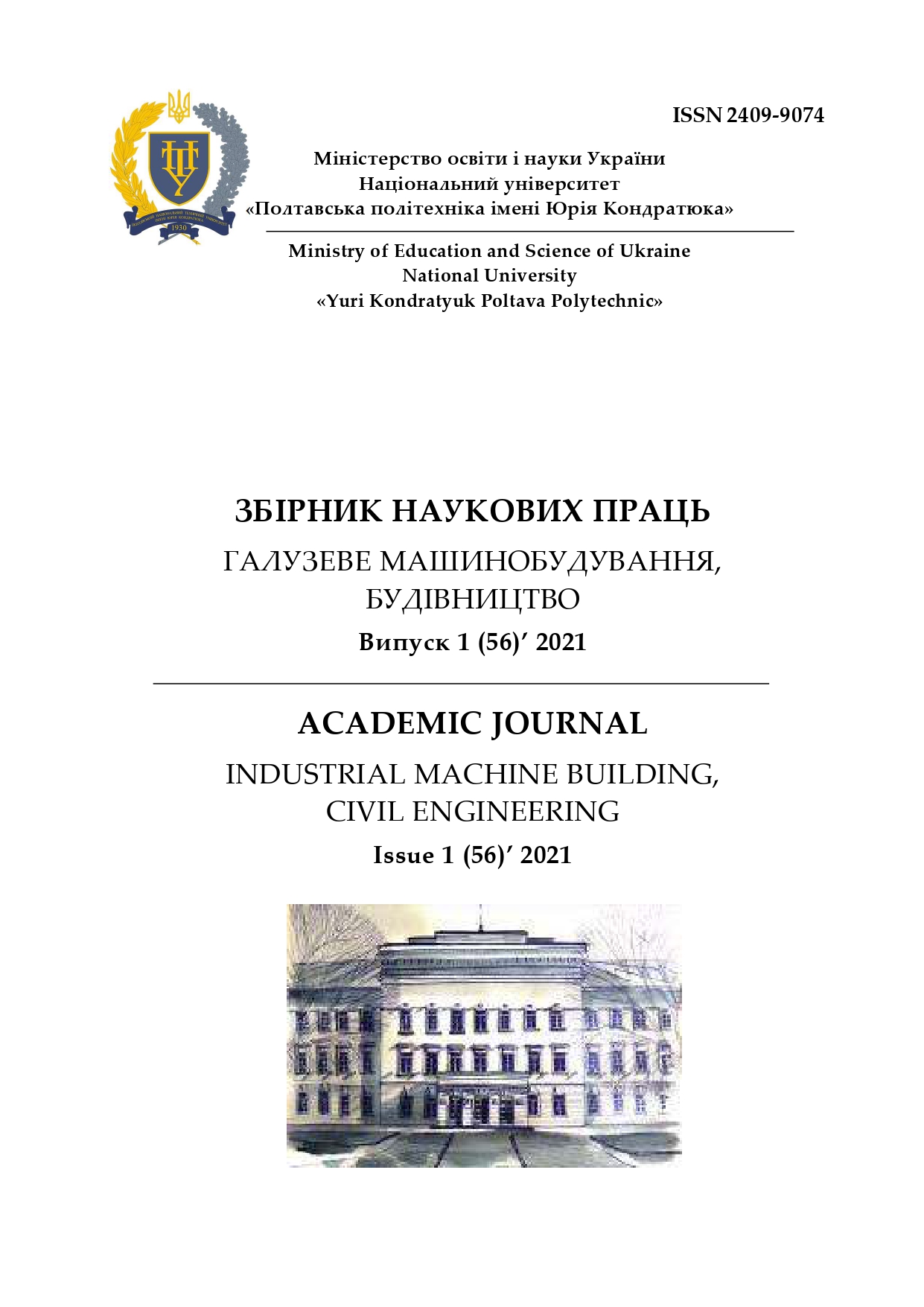Удосконалення технології заміни віконних блоків в залізобетонних панельних стінах
Анотація
З метою підвищення комфортності житлових будинків другої половини 20-го століття часто здійснюється заміна дерев'яних віконних блоків на сучасні металопластикові конструкції. В зимовий період температура поверхні внутрішнього відкосу поблизу віконної коробки може опускатися нижче точки роси, що призводить до теплової відмови за критерієм утворення конденсату. Для обґрунтування надійного конструктивно-технологічного рішення вузла примикання віконних блоків до неутеплених стін з керамзитобетонних панелей побудовані та проаналізовані двомірні температурні поля у вузлах різної конструкції. Найменша температура на поверхні внутрішнього віконного відкосу порівнювалася з температурою точки роси. Показано, що на температурний режим експлуатації вузла примикання віконного блоку до стіни істотно впливає конструкція вузла та положення вікна в товщі стіни. Утеплення зовнішнього віконного відкосу та зміщення вікна всередину приміщення підвищує температуру критичної зони вузла. На прикладі поширених панельних стін з керамзитобетону товщиною 300 мм показано, що для забезпечення належного температурного режиму експлуатації вузла необхідно виконати утеплення зовнішнього віконного відкосу та локальне фасадне утеплення у вигляді обрамлення віконного прорізу шириною 200 мм або 250 мм. Віконний блок слід відповідно встановлювати на відстані 80 мм чи 60 мм від зовнішньої поверхні стінової панелі. З технологічної точки зору для утеплення краще використовувати плити з пінополістиролу, кріплення яких до стінових панелей та зовнішнє оздоблення є менш трудомістким і дешевшим порівняно з використанням плит з мінеральної вати. Локальне фасадне утеплення навкруги віконних прорізів з товщиною, яка задовольняє вимоги норм до опору теплопередачі стін, у майбутньому може стати частиною повного фасадного утеплення при термомодернізації будівлі.
Посилання
2. Tsikaloudaki K., Laskos K. & Bikas D. (2012). On the Establishment of Climatic Zones in Europe with Regard to the Energy Performance of Buildings. Energies, 5(1), 32-44 https://doi.org/10.3390/en5010032
3. The critical importance of building insulation for the environment. European insulation manufacturers association
https://www.eurima.org/uploads/Modules/Mediacentre/brochure_en.pdf
4. Pashynskyi V.A., Nastoiashchyi V.A., Dzhyrma S.O., Plotnikov O.A., Ostapchuk A.S. (2017). The influence of the position of window blocks by the wall thickness on the thermal characteristics of their adjoining node. Sciences of Europe, 21(3), 8-13
5. Pashynskyi V.A., Dzhyrma S.O., Pashynskyi M.V. (2020). Thermal characteristics of window junctions to brick and reinforced concrete walls of civil buildings in the Kirovohrad region. Central Ukrainian Scientific Bulletin. Engineering sciences, 3(34), 200-209
https://doi.org/10.32515/2664-262X.2020.3(34).200-209
6. Pashynskyi M., Dzhyrma S., Pashynskyi V., Nastoyashchiy V. (2020). Providing the thermal reliability of window junctions during the thermal modernization of civil buildings, Electronic Journal of the Faculty of Civil Engineering Osijek-e-GFOS, 21, 45-54
https://doi.org/10.13167/2020.21.4
7. Stolarska A., Strzałkowski J., Garbalińska H. (2018). Using CFD software for the evaluation of hygrothermal conditions at wall-window perimeters. IOP Conference Series: Materials Science and Engineering, 415, 1-8
https://doi.org/10.1088/1757-899X/415/1/012046
8. Kariuk A., Rubel V., Pashynskyi V., Dzhyrma S. (2020). Improvement of Residential Buildings Walls Operation Thermal Mode. Proceedings of the 2nd International Conference on Building Innovations, 75-81
https://doi.org/10.1007/978-3-030-42939-3_9
9. Azmy N., Elghamry R. (2018). Effect of the Window Position in the Building Envelope on Energy Consumption. International Journal of Engineering & Technology, 7(3).
http://dx.doi.org/10.14419/ijet.v7i3.11174
10. Sierra F., Gething B., Bai J., Maksoud T. (2017). Impact of the position of the window in the reveal of a cavity wall on the heat loss and the internal surface temperature of the head of an opening with a steel lintel. Energy and Buildings, 142, 23-30
https://doi.org/10.1016/j.enbuild.2017.02.037
11. THERM 2.0 Program Description. (1998). Berkeley (USA). Retrieved from: https://windows.lbl.gov/sites/default/files/Downloads/therm2.pdf
12. DSTU B V.2.6-79:2009. (2009). Construction of buildings and structures. The seams in the adjoining points of window blocks to the construction of the walls. General specifications. Kyiv: Ministry of Regional Development of Ukraine
13. DSTU B V.2.6-189:2013. (2013). Methods of choosing of insulation material for insulation. Kyiv: Ministry of Regional Development of Ukraine
14. DSTU-N B V.1.1–27:2010. (2011). Protection against dangerous geological processes, harmful operational impacts, from fire. Building climatology. Kyiv: Ministry of Regional Development of Ukraine
15. Semko V.O., Pashynskyi V.A., Dzhyrma S.O., Pashynskyi M.V. (2019). Temperature regime of buildings operation in the Kirovohrad region. Central Ukrainian Scientific Bulletin. Engineering sciences, 1(32), 235-243

This work is licensed under a Creative Commons Attribution-NonCommercial-ShareAlike 4.0 International License.




